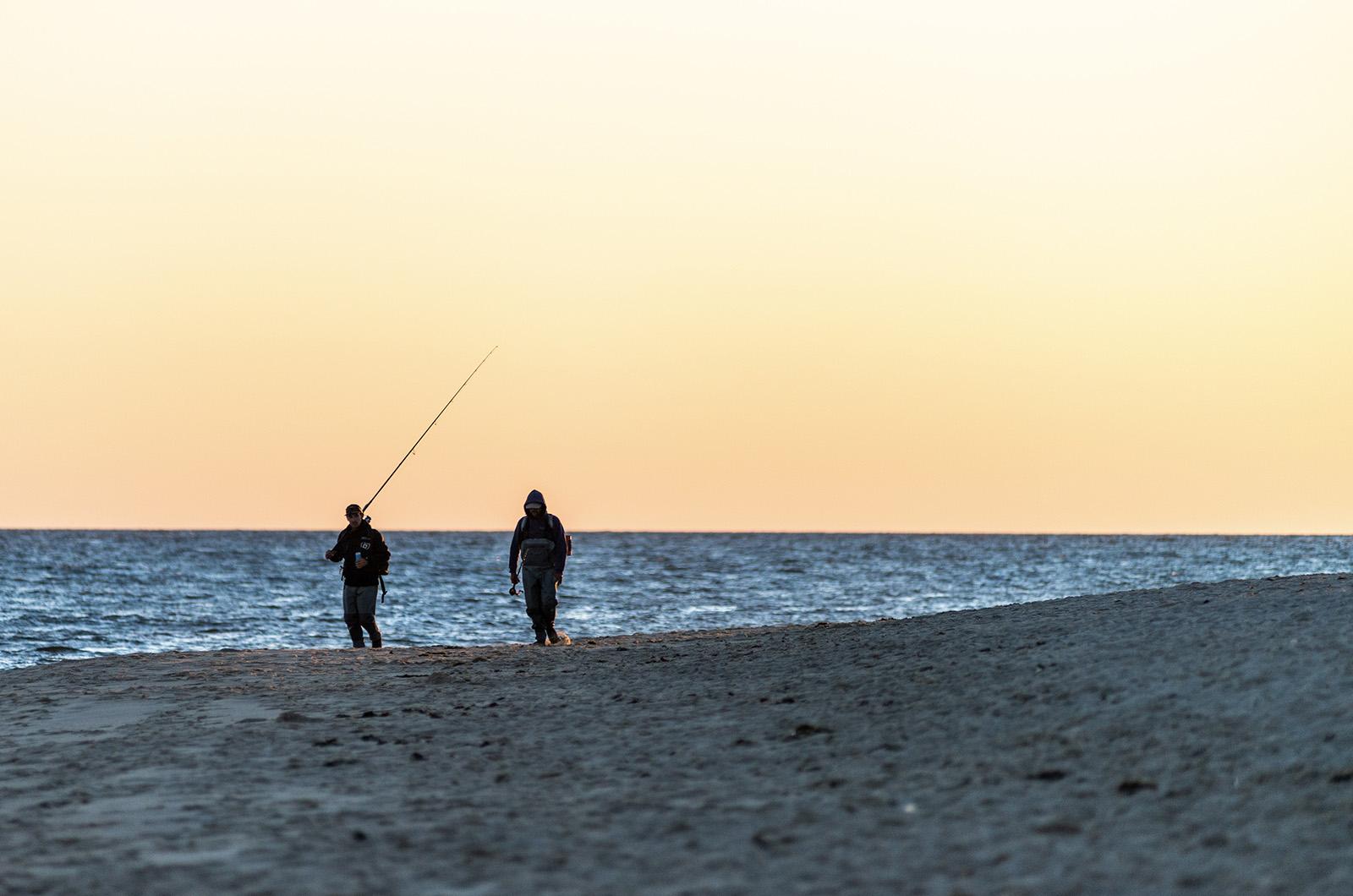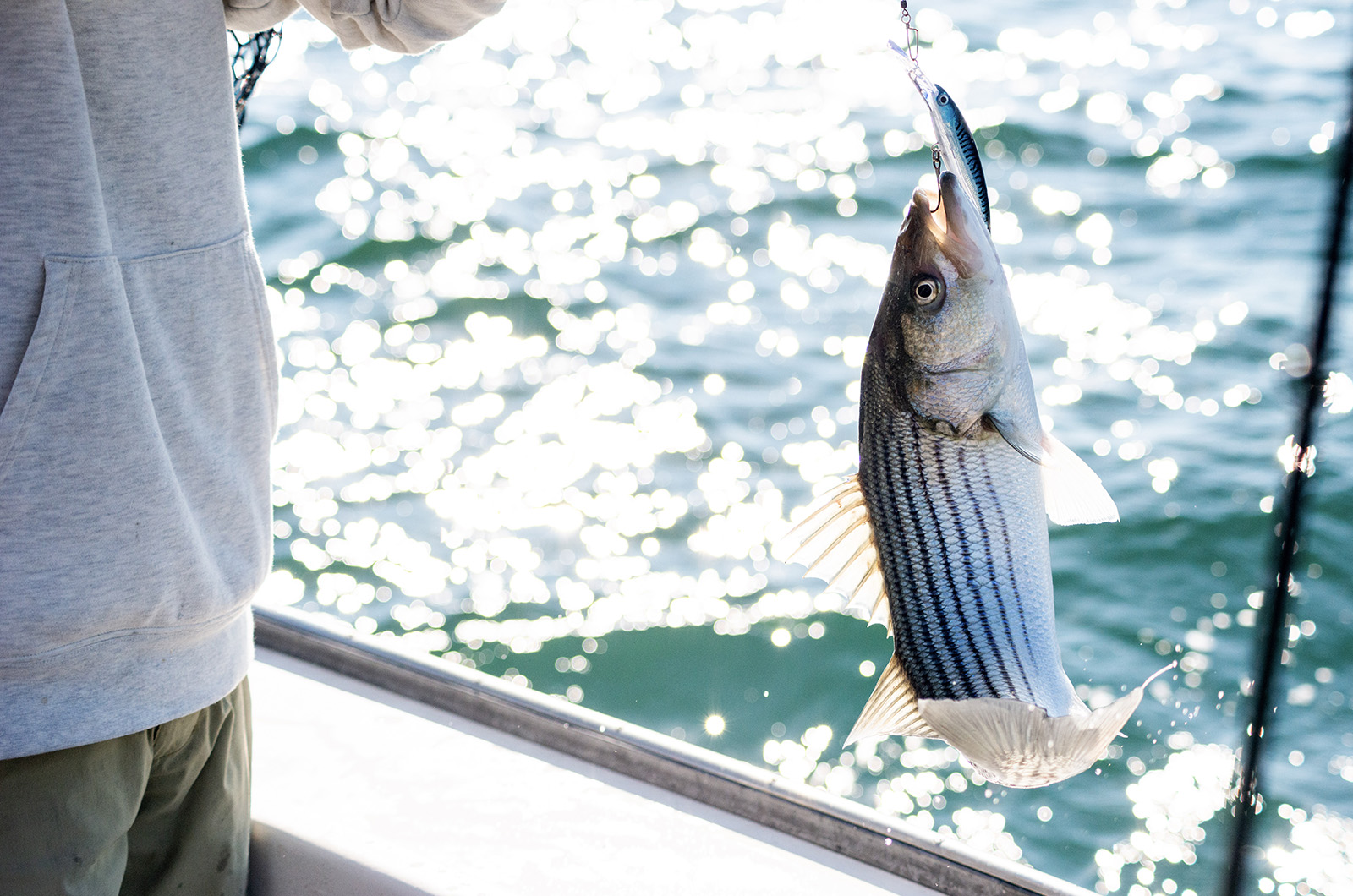On May 2 of this year at its annual spring meeting, the Atlantic States Marine Fisheries Commission made history in the now decades-long saga of America’s great “gamefish,” the striped bass.
By a vote of 15 to 1 (with New Jersey standing alone in opposition), and for only the third time in the body’s 70-plus-year history, “emergency action” was invoked, allowing the commission to rapidly augment the regulatory structure of a threatened fishery. That action in this case amounts to narrowing the coastwide slot limit, so as to ban the recreational harvest of striped bass under 28 inches and over 31 inches for a period of 180 starting no later than July 2.
The commission also initiated the development of an amendment to its current Interstate Fishery Management Plan for Atlantic Striped Bass. This so-called Addendum II is intended to “address the concerns about increased removals and stock rebuilding beyond 2023.”
While leaving many asking if it’s too little, too late, the measure is undoubtedly a win for conservation advocates and wild fish activists. Whether it will be a win for the stripers has yet to be determined.
The commission’s rationale for taking this action was straightforward. From 2021-2022, harvest of striped bass in the Atlantic more than doubled, ballooning from close to 16 million pounds to more than 35 million pounds.
The goal of the commission’s Interstate Management Plan for Atlantic Striped Bass, first implemented after the stock was declared overfished at the end of the last decade, was to rebuild the stock to a specific target biomass level by 2029. In 2021, according to the commission’s data regarding then-current harvest numbers, the estimated chance of achieving this goal was 97 per cent. Based on the updated harvest numbers from 2022, the probability of rebuilding the stock by 2029 has plummeted to 15 per cent where it would seemingly remain in the absence of a substantial harvest reduction.
There are, no doubt, several reasons for the massive surge in striped bass harvest from 2021-2022. Increased fishing effort on the part of recreational anglers, (including fishing guides, charter and party boats) played a major role as the world began to normalize in the post-pandemic era. But perhaps more impactful was the coastwide application of slot limits. A slot limit allows for harvest of fish between a minimum and a maximum size. Here in Massachusetts a slot limit from 28 to 35 inches was implemented ahead of the 2020 season. Conceptually, slot limits are intended to improve reproductive success (by protecting large breeding fish) and enhance the average catchable size in a given population. They often work. In the case of striped bass, however, the slot limit seems to have had some unintended consequences.
Striped bass are an anadromous fish, meaning that they live in salt water and spawn in fresh water. Stripers, like most anadromous fish, are known for their remarkable migrations. The bulk of the population in the Atlantic returns annually to the Chesapeake Bay to spawn. There are many factors that dictate whether the spawn in a given year will be fruitful. Salinity, substrate composition, current and tributary river flow are all important considerations. But the most critical elements are water quality and temperature. The water quality in the Chesapeake has been deteriorating for years and climate change has almost undoubtedly disrupted the timing and availability of suitable spawning conditions for stripers.
As a result, striped bass spawns since 2005 have generally been well below long-term averages, with the notable exception of 2015 which boasted the eighth highest young-of-the year index on record. The majority of the fish in this abundant class reached “slot size” just as many Atlantic states began to adopt slot limits. Consequently, most of these fish are currently “stuck in the slot.” This largely explains why the striper fishing has been so good (for fish in the slot range specifically) as most anyone who wet a line last season or this spring can attest. The lion’s share of the current biomass are slot sized and generally plentiful/available coastwide.
There has been ample debate as to whether instituting slot limits was a benevolent measure to aid a dwindling fishery or, rather, a backdoor mechanism to allow party boats, mostly located in New York and New Jersey, and long known to have outsized influence on fisheries policy, to continue to retain the maximum number of fish per trip.
Whatever the impetus, it would appear in retrospect that the plan backfired. Thus, the intention of the new slot, put into effect via the commission’s recent emergency action, is to protect what’s left of this strong 2015-year class, many of which are now larger than 31 inches and therefore protected under the new slot.
The consensus in the striped bass conservation community has long been that commercial fishing was the primary culprit in the overarching population decline that’s been observed over the last 15 or so years. However, that general perception has shifted recently and the current dominant belief is that recreational harvest and release mortality bear the brunt of the blame.
This assertion is strongly supported by current data. According to ASMFC, from 2018 to 2021, recreational release mortality, i.e. fish that are caught and subsequently die after they are released, accounted for 50 per cent of all the fish removed in that period. Recreational release mortality is estimated at about 9 per cent, so roughly nine out of every hundred fish that are released are thought to die because of being caught. It’s important to remember that an estimated 90 per cent of all striped bass fishing coast-wide is catch and release. Recreational harvest accounted for another 37 per cent, commercial harvest 11 per cent and commercial discards 2 per cent. According to this evidence, commercial fishing, once the great bogeyman of the striper conservancy world, seems to bear a lot less of the culpability than previously thought.
Commercial fisheries are managed via a quota system, so extractions are capped each year. This is not the case with the recreational fishery, for which harvest numbers can swell in productive seasons, much as they did in 2022. According to the commercial fisheries landings database provided by NOAA, in 2021 commercial fishermen harvested 3.5 million pounds of striped bass versus recreational fisherman removing close to 16 million pounds.
The frustrating and, frankly, rather vexing thing about the commercial fishery in Massachusetts (as well as in North Carolina, Rhode Island and Delaware) is that commercial fishermen are not required to fish within the slot. It’s easy to understand why commercial fishermen advocate for this. Commercial fishing is a volume endeavor in which success is measured in pounds. Consequently, it’s a lot more profitable for a fisherman to come to market with a haul of 30 pound fish opposed to a load of “slot” fish that average roughly 10 to 12 pounds.
This lack of a cohesive management strategy may not completely defeat the purpose of the limits imposed on the recreational community, but it most certainly degrades them. Regardless of who is the villain du jour in the soap opera that is striped bass management, if the intent of the current regulatory frame work is to protect the mature broodstock then it seems only logical that commercial fishing for large spawning sized female fish (all large striped bass are female) should be curtailed coastwide at least in the near term.
As far as the commission’s emergency action is concerned, it has yet to be determined if it is insufficient and belated. If it is, those of us who depend on this fishery for our livelihoods have some dark days ahead. At risk of saying the quiet part out loud, the surest path to saving striped bass would be to institute a coastwide moratorium on all harvest. It is abundantly apparent, however, that a such a drastic action is entirely unrealistic in the current administrative environment. So, if the new slot limit is the most favorable result achievable, then we should consider it satisfactory for now and embrace it.
Nevertheless, this does not mean that it is cause for celebration or that the work is finished. Notwithstanding, it is crystal clear that the new rules most certainly can’t hurt. By its very nature this measure will substantially reduce recreational and save innumerable fish.
This all begs the question — where do we go from here? What can those of us in the recreational fishing community do to create a brighter future for striped bass?
Well, first, stay informed and up to date on the regulations and abide by them strictly. There is very little actual enforcement on the water and it’s incumbent upon anglers to know the rules and play by them at all times. If you think striped bass harvest is an issue, then don’t keep them or keep only the ones that seem least likely to survive upon release.
Get involved! Fish need activists and those who love catching striped bass and are concerned about their prospects need to continue to fight for them. Fortunately, this has become a lot easier to do in the internet age. There are copious resources available online to join the fight. Organizations such as the American Saltwater Guides Association and Stripers Forever, among many other conservation associations, are easy to join and donate to and do a commendable job of consolidating and presenting what is often dense and complex information in a cogent manner. Getting your voice heard by the powers that be is generally only a couple of clicks away.
Based on the current data regarding release mortality and its impact, perhaps the most important thing the recreational fishing community can do is use best practices when it comes to catch and release. Replace treble hooks with single hooks, and fish all hooks without a barb. Use heavier gear to limit fight time. Remove hooks gently, limit air exposure, keep fish horizontal and support their body weight by handling them with two wet hands.
Small and uncomplicated steps such as these can be the difference between a fish dying or getting to live to fight another day. Stripers are a precious resource and should be handled with care.
Striped bass are every person’s fish. They are America’s fish. I, for one, am genuinely hopeful that anglers will be able to enjoy their abundance for generations to come. This dream will only become reality if we continue to be their proponents. This fight is ours. And it’s happening now.
Capt. W. Brice Contessa lives in Edgartown and is the owner/operator of Martha's Vineyard Outfitters, a fishing guide service founded in 2003.





Comments (17)
Comments
Comment policy »